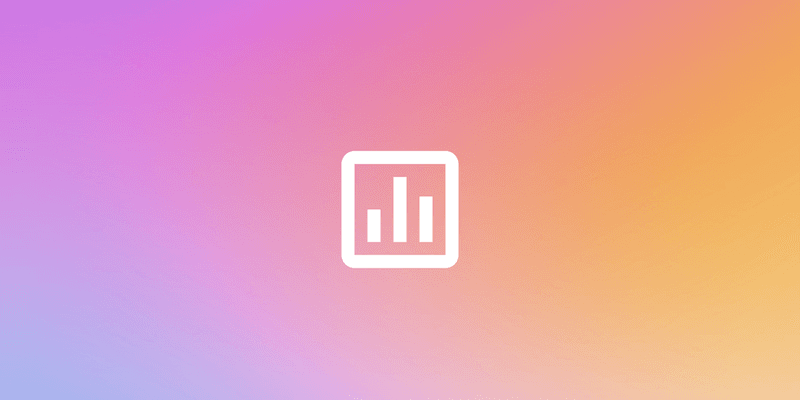Quantitative research plays a vital role in the comprehensive user research process. This approach involves numerical data derived exclusively from research findings, revealing numerous hidden aspects of customer behavior. However, many people struggle with finding the ideal ways to conduct such research while gathering the needed information. That's why, in this article, we want to elaborate on the types of quantitative research methods, their use, and potential benefits.
By giving you an insight into how the most commonly used quantitative data-collection methods work, you'll have a better understanding of how to implement them in your next strategy. Furthermore, elaborating on the types of quantitative methods will highlight their significance and showcase their usability. Continue reading to discover the different ways you can conduct quantitative research and the methods behind it!
What is Quantitative Research?
Quantitative research is a data-driven analytical method that can be used to extract key information from a larger audience. Since it's focused on numerical data, this research methodology may also serve as a robust tool for identifying relevant trends and patterns.
In contrast to qualitative research, quantitative research is most effective when applied to larger study groups. This approach achieves optimal results through the use of questions such as "How many?" and "How much?" One notable advantage of employing quantitative research is its capacity to address complex issues and shed light on hidden factors often overlooked in qualitative studies.
Moreover, it facilitates comparing results across various contexts, enhancing the testing process. As a result, this type of research proves highly valuable in many diverse fields, including healthcare, marketing, and economics.
While quantitative research is often considered easily analyzable through the use of specialized software, the real challenge stems from the limited contextual depth in the obtained findings. To address this constraint, many professionals choose a balanced approach by incorporating qualitative information, leading to the adoption of mixed methods.
Photo by Firmbee.com on Unsplash
Types Of Quantitative Research Methods
If your primary objective is gathering quantitative data, it's essential to specify the type of research you are interested in. Remember that while one of these methods may work great for one business, it doesn't always mean that you'll achieve the same results. Thus, before choosing the ideal methodology and techniques, here are some of the most commonly used focus points for quantitative research you should know:
- Correlation studies
- Descriptive research
- Experimental design
- Quasi-experimental research
Correlation studies
Correlation studies are used to evaluate the relationship between variables present during the research. By analyzing these connections, you can gain insights into user behaviors and preferences, aiding in the refinement of user experiences. Furthermore, correlation studies are particularly useful in interface design, by aiding in identifying design elements that significantly impact user satisfaction.
Descriptive research
Descriptive research is used to measure variables and establish associations between them. Unlike correlational studies, it can't establish the relationship between the variables and focuses on the characteristics of a subject without manipulating them. It's also referred to as an observational study because it's mostly used during case, cross-sectional, and prospective studies.
Experimental design
Experimental design utilizes the scientific approach to test cause-and-effect relationships by manipulating variables. In user research, it allows you to actively change elements to observe their impact on user outcomes. This method helps uncover insights into what influences user experiences, providing a controlled approach for designing and refining user-centric solutions.
Quasi-experimental research
Quasi-experimental research explores the cause-and-effect relationships but lacks full control over variables as seen in experimental design. While one of the variables in the study is independent, the other is dependent. Furthermore, it compares groups undergoing different circumstances or treatments to draw statistical conclusions.
Quantitative Research Techniques
To successfully gather the needed data, there are different techniques you can try out. Even though some of them are also used for qualitative research, they're known to drive great results for businesses. That being said, here are the best quantitative data-collection methods you should know:
- Surveys and questionnaires
- Interviews
- Observation
Surveys and questionnaires
The primary use of surveys and questionnaires in quantitative research lies in their ability to quantify opinions, attitudes, and behaviors across a broad spectrum. You can design closed-ended questions to elicit specific responses, making data analysis more efficient. Furthermore, this technique will enable you to conduct comparisons across different demographic groups and variables.
For that reason, many people turn to the use of cross-sectional and longitudinal surveys. The first option provides you with data from a diverse sample at a single point in time. These surveys efficiently capture a wide range of responses, allowing you a quick analysis and comparisons across different groups.
On the other hand, longitudinal surveys capture data from the same subjects over multiple points in time. This approach allows you to track changes, trends, and developments within a specific group. Thus, it offers a comprehensive understanding of how variables evolve over an extended period.
Image by Andreas Breitling from Pixabay
Interviews
The second quantitative data-collection technique you can try out is user interviews. Similar to the previous option, you'll have the opportunity to ask carefully crafted questions to the participants. However, this time you'll be having a one-on-one meeting where you'll be able to guide the conversation.
When dealing with this type of research, there are two types of interviews you can implement. The first option is a structured interview, where participants are asked identical questions in a specific order. Employing a standardized set of predefined questions ensures consistency in data collection during the systematic gathering of numerical insights.
The second option is known as an unstructured interview and is used when the questions can be modified based on the participant's response. Even though you can have a set of predefined questions at hand, most researchers tend to come up with suitable questions on the go. This flexible approach allows more open-ended questioning and in-depth exploration of participants' responses. Although they're primarily considered a qualitative technique, these interviews can provide valuable insights for researchers seeking a deeper understanding of complex phenomena within a quantitative context.
Observation
The last effective data-collection method for this type of research is observation. Even though this technique is most commonly used for qualitative research, it can also be used in specific quantitative research scenarios. By providing a structured and systematic approach to assess user behavior you can derive measurable insights into usability, efficiency, and user interactions with a product or service.
This method allows you to collect objective data about task completion times, error rates, and other performance metrics, contributing to a quantitative understanding of usability. The numerical information obtained from quantitative observation enhances the reliability of findings, helping you make data-driven recommendations for optimizing user experiences.
How to Choose the Right Quantitative Research Methods
Even after you've gathered all the necessary information, you may still be wondering about how to choose the right quantitative research methods for your case. The first thing you need to do is assess your research goals and objectives. This way, you can align the desired outcome with the ideal data-collection method to achieve optimal results.
For this reason, we recommend the use of the SMART framework. This helps you focus on gathering insights that are:
- Specific
- Measurable
- Attainable
- Relevant
- Time-bound
Furthermore, we also advise you to choose the ideal data-collection methods based on the information you want to acquire. Always be mindful of the questions you need to ask the participants by preparing them in advance.
Lastly, remember that the gathered data has to be analyzed if you want to gain valuable insights from it. Even though the numerical findings may require specific software for detailed analysis, you can also make use of various online tools. If you want to implement the power of AI during the process, check out the features we offer at User Evaluation for fast and efficient user research.
Conclusion
After learning about the different types of quantitative research methods, we highly advise you to try the ones we've mentioned throughout the article. By keeping your research objectives in mind, you should always choose the option that will benefit your business the most. So, take the time to evaluate your circumstances and decide on the type of data you need.


